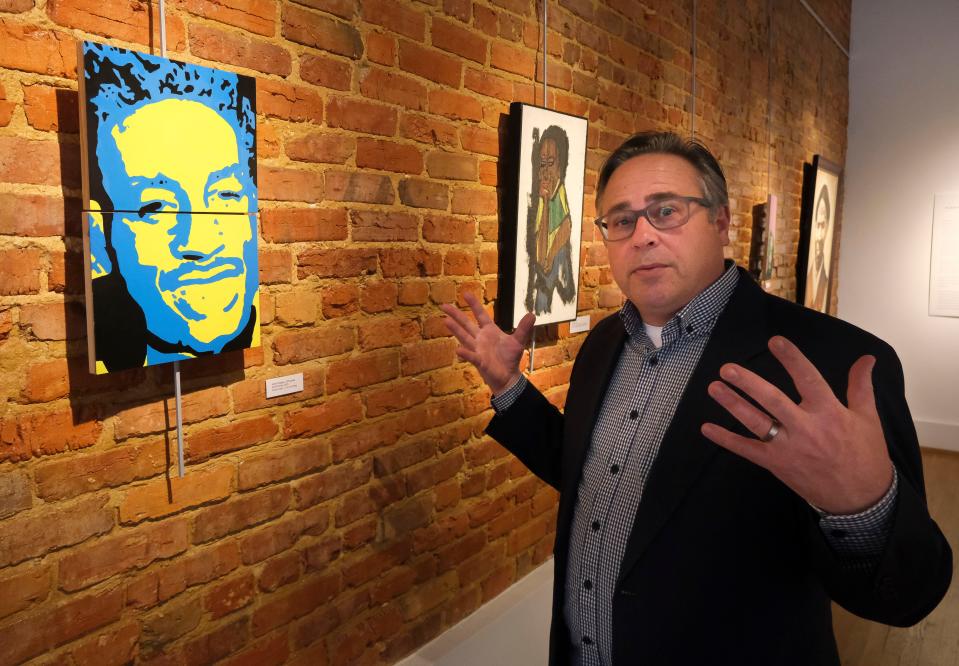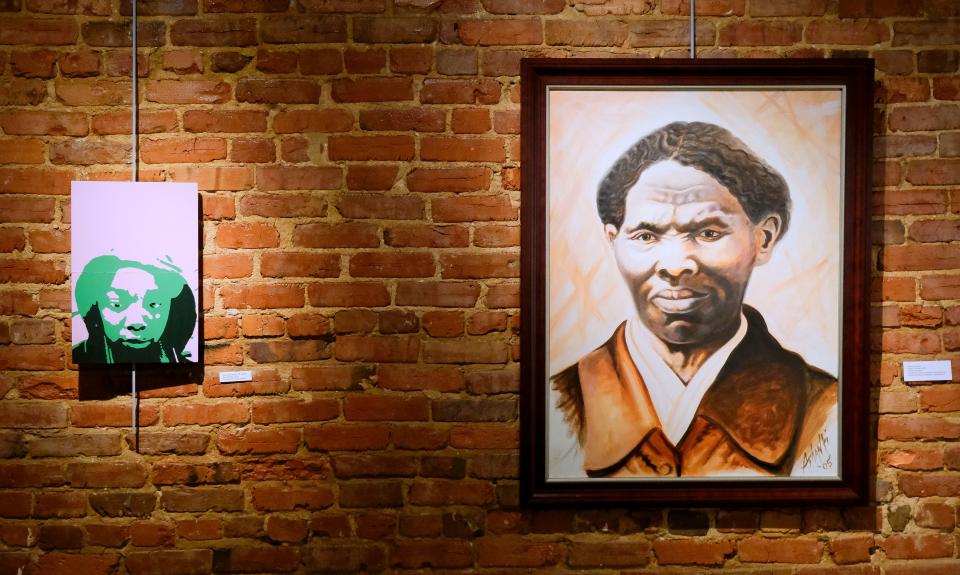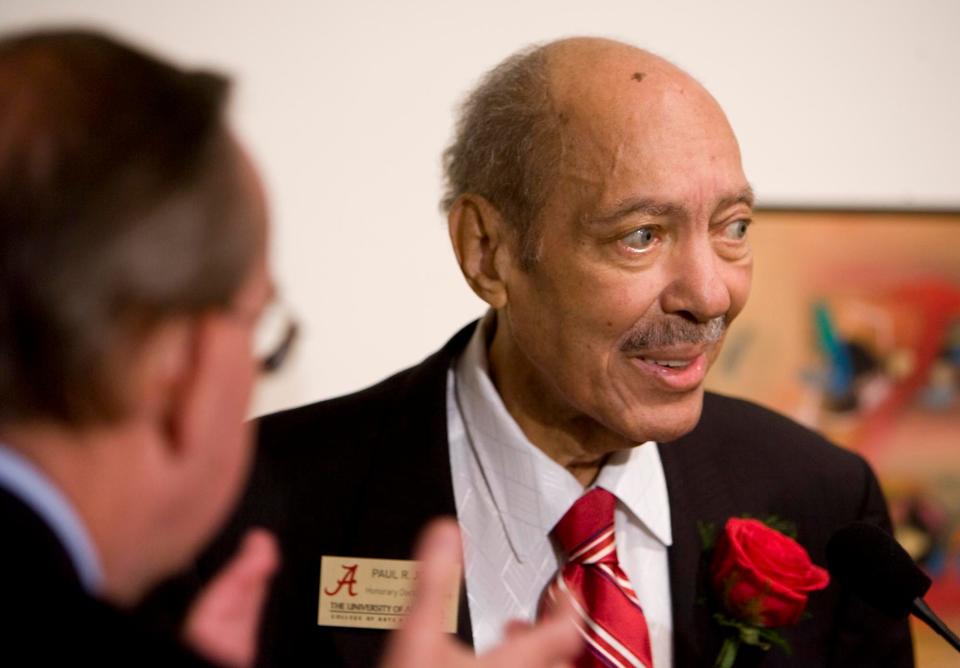Black History Month: UA's Paul R. Jones Museum aims to elevate African-American art
Visitors who walk into Paul R. Jones Museum in downtown Tuscaloosa will experience a one-of-a-kind collection that provides a closer look into African-American art.
Daniel White, the museum's director, says an essential part of the collection's mission is to inspire future artists.
"I think it's one of the most important African-American art collections in the United States," White said.
The museum, which is on Sixth Street, presents a year-round schedule of exhibitions of works from the Paul R. Jones Collection of American Art at the University of Alabama, along with guest exhibitions.
NICK SABAN COMMEMORATIVE BOOK: Relive Nick Saban’s epic Alabama football coaching career with our special book! Preorder here.
The most recent guest exhibition features artwork created by Central High School students. The museum is presenting its new exhibition, "Within: Portrait Responses to the Paul R. Jones Collection," now through Feb. 16. The exhibition includes 42 paintings by the Central High students, alongside the works they explored and were inspired by in the collection.
According to a news release, "Within" is an exhibition of the Paul R. Jones Collection of American Art K-12 Outreach Program, a long-running exhibition series that connects art education with local schools.
A public reception for the exhibition was scheduled during Tuscaloosa’s First Friday Art Walk, downtown Tuscaloosa's monthly arts and entertainment event.
White said his favorite aspect of the Paul R. Jones Museum is that it's not just available for UA students, but everyone in the Tuscaloosa community.
"We're a part of the university, but we're accessible and available in our local community and I think that's really great because it allows our public to interact with us," White said.
White, who has been the museum director since 2018, said he believes it's important to support arts programs in local schools because there aren't enough of those types of programs available.

The museum honors Jones’ vision of art, community and continuous learning by hosting lecture series, concerts, workshops, and theatrical performances. The museum is also a classroom for the arts, where students from kindergarten to college experience learning in a new and exciting environment.
Paul Raymond Jones, a Bessemer native, donated his 1,700-plus piece collection, valued at more than $10.3 million, to the College of Arts and Sciences at the University of Alabama in October 2008. Jones, who died in 2010, was motivated to collect art when he noticed an absence of works by African-American artists at museums galleries and auctions.
“My goal had been to incorporate African-American art into American art,” Jones told The Tuscaloosa News in 2008 when he donated his collection to UA. “This is my way of coming back home in wanting to give a gift to the state of my birth.”
The Paul R. Jones Museum was created in 2011 to exhibit his collection. About 300 works were added in 2013, bringing the total to over 2,000 works. The collection includes art in a variety of media from more than 600 artists. Jones collected works by both well-known and lesser-known artists, another aspect that makes his collection unique.
The Paul R. Jones Collection is designed is to share the works of American artists and their significance with the people of Alabama and beyond and to be used to educate students on the importance of art in life.
White described the Paul R. Jones Museum as a "purpose-driven" museum and said he feels a great responsibility to honor Jones' vision.
"We do our best to honor his legacy and what he wished for the collection," he said.

Jones was rejected from entry in the University of Alabama's law school in 1949 because he was Black. Over the years, Jones amassed a wide collection of Black-created art, later donating part of his collection to UA and the other half to the University of Delaware.
White said Jones donated the collection to UA to share a message of hope and forgiveness.
Unlike many art collectors, Jones was not independently wealthy. According to the 2008 article in The Tuscaloosa News, he became hooked on collecting art after buying three pieces from a street vendor in the 1960s. He went to free lectures and talked to artists to learn, and decided his collection would be African-American art.
Jones, who had a 15-year career with the federal government, resisted the temptation to sell his art collection and walk away a multimillionaire. Instead, he wanted the university to use his collection to teach.
“I wanted to see this rolled into the curriculum so students see African-American art as American art,” Jones said in 2008.

Jones received several awards and recognitions, including an honorary doctorate of laws from the University of Alabama.
White said the museum also provides a great opportunity for art students who are interested in pursuing a museum career.
"This is a way for them to get exposure and experience in what that environment is like and see how things happen behind the scenes," White said.
The Paul R. Jones museum is a part of Tuscaloosa's First Friday Art Walk and it is also listed on the Civil Rights History Trail, an 18-stop path that documents some of Tuscaloosa's notable moments in the struggle for racial equality.
The museum is at 2308 Sixth St. (recently renamed Gary Fitts Street) in downtown Tuscaloosa, one block from the Dinah Washington Cultural Arts Center. Museum hours are 9 a.m.-5 p.m. Monday-Friday. Admission to the Paul R. Jones Museum is free.
Reach Jasmine Hollie at JHollie@gannett.com.
This article originally appeared on The Tuscaloosa News: Black History Month: UA museum aims to elevate African-American art

